 Lesson 17
Lesson 17
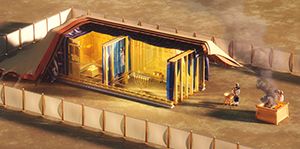
1. What did God ask Moses to build?
“Let them make Me a sanctuary, that I may dwell among them” (Exodus 25:8).
Answer: The Lord told Moses to build a sanctuary—a special building that would serve as a dwelling place for the God of heaven.
A Brief Description of the Sanctuary The original sanctuary was an elegant, tent-type structure measuring approximately 4.5 meters by 13.5 meters (based on an 45-centimeter cubit), in which the presence of God dwelt, and special services were conducted. The walls were made of upright wooden boards set in silver sockets and overlaid with gold (Exodus 26:15–19, 29). The roof consisted of four coverings: linen, goat hair, ram skin, and badger skin (Exodus 26:1, 7–14). It had two rooms: the Holy Place and the Most Holy Place, separated by a thick, heavy veil (curtain). The courtyard—the area around the sanctuary—measured approximately 22.5 meters by 45 meters (Exodus 27:18). It was enclosed with fine linen cloth supported by 60 pillars made of brass (Exodus 27:9–16).
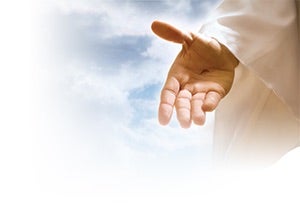
2. What did God expect His people to learn from the sanctuary?
“Your way, O God, is in the sanctuary; who is so great a God as our God?” (Psalm 77:13).
Answer: God’s way, the plan of salvation, is revealed in the earthly sanctuary. The Bible teaches that everything in the sanctuary—the dwelling, furniture, and services—are symbols of something Jesus did in saving us. This means we can fully comprehend the plan of salvation as we fully understand the symbolism connected with the sanctuary. Thus, the importance of this Study Guide can’t be overstated.
3. From what source did Moses obtain the blueprints for the sanctuary? Of what was the building a copy?
“Now this is the main point of the things we are saying: We have such a High Priest, who is seated at the right hand of the throne of the Majesty in the heavens, a Minister of the sanctuary and of the true tabernacle which the Lord erected, and not man. … There are priests … who serve the copy and shadow of the heavenly things, as Moses was divinely instructed when he was about to make the tabernacle. For He said, ‘See that you make all things according to the pattern shown you on the mountain’ ” (Hebrews 8:1, 2, 4, 5).
Answer: God Himself gave Moses the sanctuary’s construction specifications. The building was a copy of the original sanctuary in heaven.
4. What furniture was in the courtyard?
Answer: 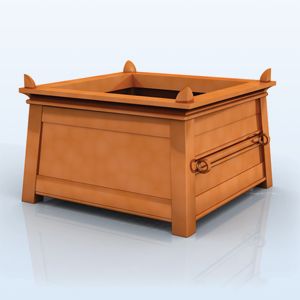
A. The altar of burnt offerings where animals were sacrificed, was located just inside its entrance (Exodus 27:1–8). This altar represents the cross of Christ. The animal represents Jesus, the ultimate sacrifice (John 1:29).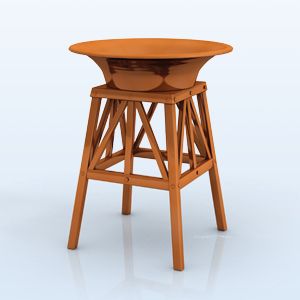
B. The laver, located between the altar and the entrance to the sanctuary, was a large washbasin made of brass. Here priests washed their hands and feet before offering a sacrifice or entering the sanctuary (Exodus 30:17–21; 38:8). The water represents cleansing from sin and the new birth (Titus 3:5).
5. What furniture was in the holy place?
Answer: 
A. The table of shewbread (Exodus 25:23–30) represents Jesus, the living bread (John 6:51).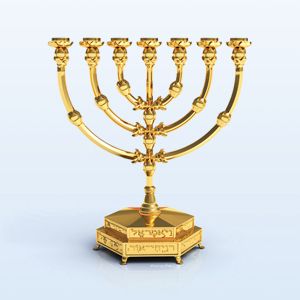
B. The seven-branch candlestick (Exodus 25:31–40) also represents Jesus, the light of the world (John 9:5; 1:9). The oil represents the Holy Spirit (Zechariah 4:1–6; Revelation 4:5).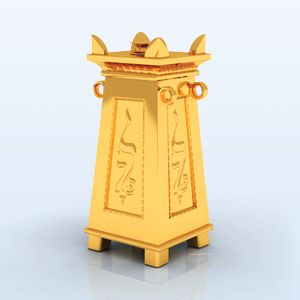
C. The altar of incense (Exodus 30:7, 8) represents the prayers of God’s people (Revelation 5:8).
6. What furniture was in the most holy place?
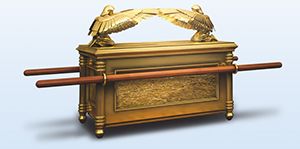
Answer: The Ark of the Covenant, the only piece of furniture in the Most Holy Place (Exodus 25:10–22), was a chest of acacia wood overlaid with gold. Placed on top the chest were two angels made of solid gold. Between these two angels was the mercy seat (Exodus 25:17–22), where the presence of God dwelt. This symbolised God’s throne in heaven, which is likewise located between two angels (Psalm 80:1).
7. What was inside the ark?

Answer: The ark contained the Ten Commandments, which God wrote on tablets of stone (Deuteronomy 10:4, 5). Above them was the mercy seat, signifying that as long as God’s people confessed and forsook sin, mercy would be extended to them through the blood that the priest sprinkled on the mercy seat (Leviticus 16:15, 16). This blood represented the blood of Jesus, which would be shed to bring forgiveness of sins (Matthew 26:28; Hebrews 9:22).
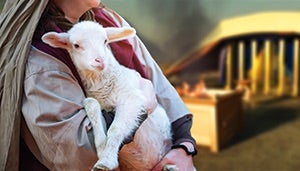
8. Why did animals need to be sacrificed in the sanctuary services?
“According to the law almost all things are purified with blood, and without shedding of blood there is no remission” (Hebrews 9:22). “This is My blood of the new covenant, which is shed for many for the remission of sins” (Matthew 26:28).
Answer: The practice of sacrificing animals was essential to help people understand that their sins could only be forgiven through the shedding of Jesus’ blood. Sin carries the penalty of eternal death (Romans 6:23). When Adam and Eve sinned, they would have immediately faced death if not for Jesus, who offered His own perfect life as a sacrifice to pay the death penalty for all humanity (John 3:16; Revelation 13:8).
After sin entered the world, God required sinners to bring animal sacrifices (Genesis 4:3–7). The sinner had to personally take the life of the animal (Leviticus 1:4, 5). This act was gruesome and unsettling, serving to impress upon the sinner the grave consequences of sin (eternal death) and the urgent need for a Saviour and Substitute. Without a Saviour, there would be no hope for salvation.
The sacrificial system symbolically conveyed that God would eventually give His Son to die for humanity’s sins (1 Corinthians 15:3). Jesus would not only be their Savior but also their Substitute (Hebrews 9:28). When John the Baptist encountered Jesus, he declared, “Behold! The Lamb of God who takes away the sin of the world” (John 1:29). In the Old Testament, people looked forward to the cross for their salvation, while we, in the New Testament era, look back to Calvary for our salvation. There is no other means of salvation (Acts 4:12).
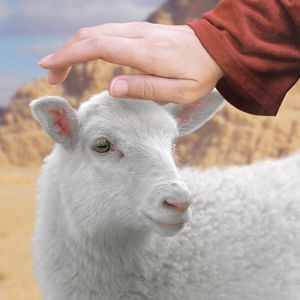
9. How were animals sacrificed in the sanctuary services, and with what meaning?
“He shall put his hand on the head of the burnt offering, and it will be accepted on his behalf to make atonement for him. … He shall kill it on the north side of the altar” (Leviticus 1:4, 11).
Answer: When a sinner brought a sacrificial animal to the entrance of the courtyard, a priest would provide the sinner with a knife and a basin. The sinner would then place their hands on the head of the animal and confess their sins. This act symbolised the transfer of their sins from the sinner to the animal. At this moment, the sinner was considered free from guilt, while the animal was regarded as bearing the guilt of the sins.
Since the animal was now symbolically guilty, it had to suffer sin’s penalty, which was death. By personally slaughtering the animal, the sinner received a vivid lesson. They understood that their sins were responsible for the innocent animal’s death and that, in the same way, their sins would ultimately lead to the death of the innocent Messiah. This ritual served as a powerful and tangible reminder of the grave consequences of sin and the need for a sinless sacrifice to atone for it.
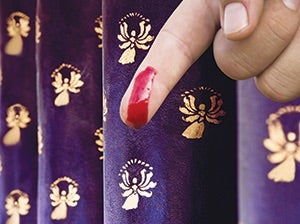
10. When a sacrificial animal was offered for the entire congregation, what did the priest do with the blood? What does this symbolise?
“The anointed priest shall bring some of the bull’s blood to the tabernacle of meeting. Then the priest shall dip his finger in the blood and sprinkle it seven times before the Lord, in front of the veil” (Leviticus 4:16, 17).
Answer: When a sacrifice was offered to atone for the sins of the entire congregation, the priest, who represented Jesus (Hebrews 3:1), would take the blood into the sanctuary. Specifically, he would sprinkle the blood before the veil that separated the two chambers of the sanctuary. It’s important to note that the presence of God dwelled on the other side of this veil.
In this process, the sins of the people were symbolically transferred to the sanctuary, thereby cleansing them from sin. This ritual foreshadowed Jesus’ current ministry on our behalf in heaven. After Jesus’s crucifixion, He resurrected and ascended to heaven to serve as our high priest. In this role, He ministers His own blood in the heavenly sanctuary (Hebrews 9:11, 12).
The act of the earthly priest ministering the blood represented Jesus applying His own blood to our record of sins in the heavenly sanctuary. Through this ministry, our sins are forgiven when we confess them in His name (1 John 1:9).
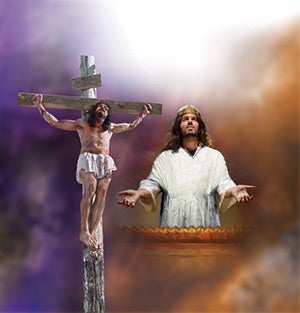
11. Based on the sanctuary services, in what two major capacities does Jesus serve His people? What fantastic benefits do we receive from His loving ministry?
“Christ, our Passover, was sacrificed for us” (1 Corinthians 5:7). “Seeing then that we have a great High Priest who has passed through the heavens, Jesus the Son of God, let us hold fast our confession. For we do not have a High Priest who cannot sympathise with our weaknesses, but was in all points tempted as we are, yet without sin. Let us therefore come boldly to the throne of grace, that we may obtain mercy and find grace to help in time of need” (Hebrews 4:14–16).
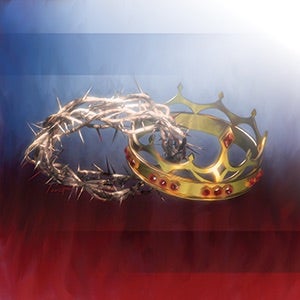
Answer: Yes, our High Priest, Jesus not only serves as the Sacrifice for our sins but also provides us with the power to live right in the present and future. His role accomplishes two remarkable transformations in our lives:
A. The new birth: Through faith in Jesus, we experience a profound change in our lives, often referred to as the “new birth.” This change involves the forgiveness of all our past sins and a spiritual transformation (John 3:3–6; Romans 3:25).
B. Empowerment for righteous living: Jesus provides us with the power and ability to live according to God’s righteous standards in our present lives and the future (Titus 2:14; Philippians 2:13).
These two transformations result in righteousness, signifying a right relationship between us and God. Importantly, righteousness is not achieved through our own efforts or works but through the miraculous work of Jesus in us (Acts 4:12). It is attained by placing our trust in Jesus, allowing Him to govern our lives, and relying on Him to work these transformative miracles as we fully cooperate with Him. This concept is often referred to as “righteousness by faith.” In essence, we invite Jesus to be the ruler of our lives and have faith that He will perform the necessary miracles in us. This righteousness, accomplished by Christ, is the only genuine righteousness, while all others are mere counterfeits.
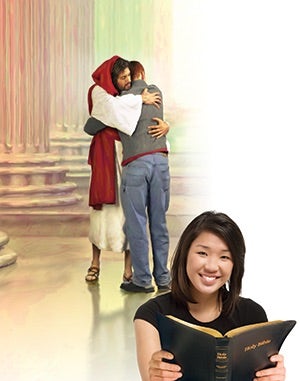
12. What six promises does the Bible give about the righteousness offered to us through Jesus?
Answer: A. He will cover our past sins and count us as guiltless (Isaiah 44:22; 1 John 1:9).
B. We were created in God’s image in the beginning (Genesis 1:26, 27). Jesus promises to restore us to God’s image (Romans 8:29).
C. Jesus gives us the desire to live righteously and then grants us His power to actually accomplish it (Philippians 2:13).
D. Jesus, by His miracle power, will cause us to happily do only the things that please God (Hebrews 13:20, 21; John 15:11).
E. He removes the death sentence from us by crediting us with His sinless life and atoning death (2 Corinthians 5:21).
F. Jesus assumes responsibility for keeping us faithful until He returns to take us to heaven (Philippians 1:6; Jude 1:24).
Jesus is ready to fulfill all these glorious promises in your life! Are you ready?
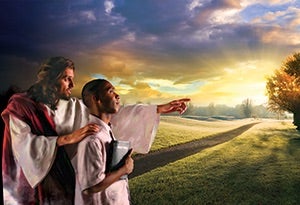
13. Does a person have any role at all to play in becoming righteous by faith?
“Not everyone who says to Me, ‘Lord, Lord,’ shall enter the kingdom of heaven, but he who does the will of My Father in heaven” (Matthew 7:21).
Answer: Yes. Jesus said we must do His Father’s will. In Old Testament days, a person who truly had been converted kept bringing lambs to sacrifice, indicating his sorrow for sin and his whole-hearted desire to let the Lord lead in his life. Today, though we cannot work the miracles needed to become righteous, we must daily recommit to Jesus (1 Corinthians 15:31), inviting Him to direct our lives so those miracles can take place. We must be willing to be obedient and to follow where Jesus leads (John 12:26; Isaiah 1:18–20). Our sinful nature causes us to want to have our own way (Isaiah 53:6) and thus to rebel against the Lord, just as Satan did in the beginning (Isaiah 14:12–14). Permitting Jesus to rule our lives is sometimes as difficult as having an eye plucked out or an arm torn off (Matthew 5:29, 30), because sin is addictive and can be overcome only by God’s miraculous power (Mark 10:27). Many believe that Jesus will take to heaven all who merely profess salvation, regardless of their conduct. But this is not so. It is a deception. A Christian must follow Jesus’ example (1 Peter 2:21). The powerful blood of Jesus can accomplish this for us (Hebrews 13:12), but only if we give Jesus full control of our lives and follow where He leads—even when the path might sometimes be rough (Matthew 7:13, 14, 21).
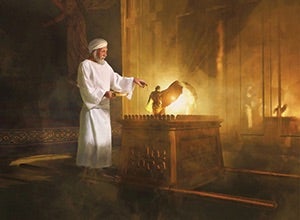
14. What was the Day of Atonement?
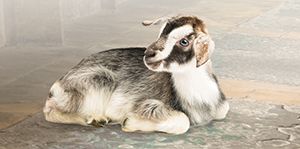
Answer: A. The Day of Atonement was an annual solemn day of judgment in Israel, occurring once each year (Leviticus 23:27). On this day, all individuals were required to confess every sin they had committed. Those who refused to do so were immediately cut off from the camp of Israel (Leviticus 23:29).
B. Two goats were chosen for this occasion: one was the Lord’s goat, and the other was the scapegoat, symbolising Satan (Leviticus 16:8). The Lord’s goat was sacrificed and offered for the sins of the people (Leviticus 16:9). However, on this specific day, the blood from the sacrifice was taken into the most holy place and sprinkled upon and before the mercy seat (Leviticus 16:14). Only on this unique day did the high priest enter the most holy place to meet with God at the mercy seat.
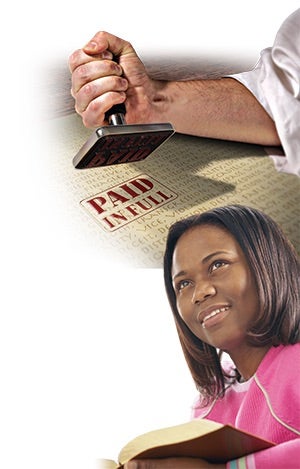
15. Did the Day of Atonement symbolize or foreshadow a part of God’s great plan of salvation, as did the other facets of the earthly sanctuary and its services?
“It was necessary that the copies of the things in the heavens should be purified with these, but the heavenly things themselves with better sacrifices than these” (Hebrews 9:23).
Answer: Yes. That day’s services pointed to the blotting out of sin by the real High Priest in the heavenly sanctuary. Through His shed blood applied to those written in the book of life, Christ would confirm the decisions of His people to serve Him eternally. This special judgment day, like that of Israel’s Yom Kippur, foreshadowed the final atonement to be made for planet Earth. From the yearly symbol of the ancient Day of Atonement, all of humanity is assured that our faithful High Priest, Jesus, still mediates in heaven for His people and stands ready to blot out the sins of all who exercise faith in His shed blood. The final atonement leads to the final judgment, which settles the sin question in the life of every individual, resulting in either life or death.
Momentous Events
You will discover in the next two Study Guides that the symbolism of the earthly sanctuary and especially the Day of Atonement foreshadowed momentous events of the end time, which God will bring to pass from the heavenly sanctuary.
Date for the Judgment
In the next Study Guide, we will examine a crucial Bible prophecy in which God sets a date for the heavenly judgment to begin. Thrilling indeed!
16. Are you willing to accept truth that might be new to you, as God reveals it?
Answer:
Quiz Questions
1. Which pieces of furniture were in the courtyard of the sanctuary? (2)
_____ The mercy seat.
_____ The laver.
_____ Chairs.
_____ Altar of burnt offerings.
2. God’s presence dwelt at the mercy seat. (1)
_____ Yes.
_____ No.
3. The seven-branch candlestick represented (1)
_____ Jesus, the light of the world.
_____ The second coming of Christ.
_____ The glittering walls of the new Jerusalem.
4. The purpose of the sanctuary and its services was to (1)
_____ Help the people understand angels.
_____ Provide flesh food for the people.
_____ Symbolize the plan of salvation.
5. Who drew the plans for the sanctuary? (1)
_____ Noah.
_____ An angel.
_____ Aaron.
_____ God.
6. The Ten Commandments were inside the ark of the covenant. (1)
_____ Yes.
_____ No.
7. The slain sacrificial animals represented (1)
_____ The Holy Spirit.
_____ Warfare.
_____ Jesus.
8. Based on the sanctuary, in what two capacities does Jesus serve us? (2)
_____ King.
_____ Sacrifice.
_____ High Priest.
_____ Ruler of the universe.
9. Which of the following were true of the earthly sanctuary? (2)
_____ It had three rooms.
_____ It was a tent-type structure.
_____ Its size was 500 feet by 1,000 feet.
_____ Its courtyard was made of brass pillars and linen cloth.
_____ Roof was made of Egyptian tile.
_____ Laver was in most holy place.
10. Righteousness by faith is the only true righteousness. (1)
_____ Yes.
_____ No.
11. Righteousness by faith comes from (1)
_____ Man’s works.
_____ Being baptised.
_____ Faith in Jesus Christ alone.
12. Who killed the sacrificial animal that a sinner brought? (1)
_____ God.
_____ The priest.
_____ The sinner.
13. Which statements are true about the righteousness Jesus offers? (3)
_____ It will restore us to God’s image.
_____ It is not miraculous.
_____ Our good works are a big part of it.
_____ It covers our past sins.
_____ It gives us the desire to live right.
_____ It covers sins we don’t want to give up.
14. Which of the following are true regarding the day of atonement? (4)
_____ It occurred monthly.
_____ It was a day of judgment.
_____ It was a day of games and good fun.
_____ It symbolised the final judgment.
_____ The scapegoat symbolised Satan.
_____ The blood was taken into the most holy place.
15. Righteousness means a right relationship with God. (1)
_____ Yes.
_____ No.
16. Slaying an animal helped the people realise that sin brought the death penalty upon all people. (1)
_____ Yes.
_____ No.
17. Are you willing to accept Christ’s righteousness, which includes forgiveness, cleansing from sin, and the power to live right in the present and future?
_____ Yes.
_____ No.


